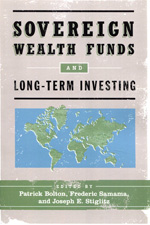Money Capital
New Monetary Principles for a More Prosperous Society
- ISBN: 9780691232225
- Editorial: Princeton University Press
- Fecha de la edición: 2025
- Lugar de la edición: Princeton (NJ). Estados Unidos de Norteamérica
- Encuadernación: Cartoné
- Medidas: 24 cm
- Nº Pág.: 312
- Idiomas: Inglés

A novel perspective on monetary and fiscal policy that views money as the equity capital of a nation
A conventional economic theory, monetarism, holds that inflation is a monetary phenomenon driven by changes in the supply of money. Yet recent experience-including the aftermath of the financial crisis of 2008 and the economic development of China-contradict this basic prediction. In this book, leading economists Patrick Bolton and Haizhou Huang offer a novel perspective, viewing monetary economics through the lens of corporate finance. They propose a richer theory, where money can be seen as the equity capital of a nation, playing a similar role as stocks for a company. This innovative framework integrates the real and monetary sides of the economy, with a banking sector and debt at its core.
In the financial world, companies issue new shares only if it results in some kind of value creation; this is a basic principle of corporate finance that Bolton and Huang argue can be applied to monetary economics. When the government increases the money supply to finance positive net value investments-when it prints money to keep the economy going-it increases output, not inflation. This is evidenced by the strong growth in GDP and money in China over the last four decades, and in the United States during World War II. The effect of increasing money supply, they argue, depends on how money enters the system and what the money buys. The principles outlined by Bolton and Huang shed new light on a range of issues, including inflation, monetary and fiscal policy, central banking, money and growth, and the international monetary system.
The Poverty of Monetarism 1
1 Monetarism as Formulated by Friedman and Schwartz 3
2 Minsky’s Critique 5
3 Some Macroeconomic Puzzles 7
4 Enriching the Monetarist Framework 16
4.1 Money Is Equity 16
4.2 Money Is Sovereignty 23
4.3 Money Is Central Banking 28
5 Concluding Remarks 34
2 The Capital Structure of Nations 38
1 A Simple, Open Monetary Economy 43
2 The Modigliani-Miller Theorem for Nations 46
3 Optimal Capital Structure for Nations 51
3.1 Money Financing and Inflation Costs 52
3.2 Debt Financing and the Cost of Default 54
3.3 Debt Versus Equity Financing 54
4 Debt Overhang 57
5 Foreign-Exchange Reserve Management 58
6 Model Predictions and Empirical Observations 61
7 Summary 67
3 Money, Banking, and the Lender of Last Resort 68
1 A Closed Monetary Economy Framework 79
1.1 Firms, Banks, and Inside Money 79
2 No Aggregate Uncertainty 81
2.1 Equilibrium with Scarce Investment Opportunities 81
2.2 Equilibrium with Scarce Money 87
3 Aggregate Uncertainty and the Bagehot Rule 92
4 Aggregate Uncertainty and the Draghi Rule 98
5 Moral Hazard 104
6 Conclusion 106
Appendix 107
4 How Did China Finance Its Growth? 109
1 The Extraordinary Economic Development of China 111
2 Capital Investment in China’s Growth Process 112
3 The Challenge of Raising Capital in
Developing Countries 115
4 The Problems of Centralized Credit Allocation 116
5 Transformation of the Central Bank 121
6 Credit Creation and the Transformation
of the Banking System 124
7 China Development Bank and Development Finance 137
8 The Evolving Capital Market Reform
and Development 145
9 The Puzzle of China’s High Monetary Growth
and Low Inflation 149
5 The Coordination of Fiscal and Monetary Policy 153
1 Money and Sovereign Debt 153
2 The Institutional and Informational Frictions
Affecting Fiscal and Monetary Policy 154
2.1 Institutional and Informational Frictions 155
2.2 The Functions of Monetary Policy 157
2.3 The Functions of Fiscal Policy 159
3 The Coordination of Monetary and Fiscal Policies 160
4 Policy Dominance and How to Break It 163
5 Case Study of the United States 167
5.1 Before the Great Depression (Pre-1929) 168
5.2 The Great Depression (1929–1933) 168
5.3 World War II (1942–1945) 171
5.4 Stagflation (1970–1981) 174
5.5 Global Financial Crisis (2007–2009) 176
5.6 The COVID-19 Pandemic (2020–2021) 179
6 Case Study of China 182
6.1 The Birth of the Centrally Planned Economy (1952–1978) 182
6.2 Early Years of Reform and Opening Up (1978–1994) 185
6.3 Asian Financial Crisis (1997) 186
6.4 Global Financial Crisis (2008) 190
6.5 Deleveraging and U.S.-China Trade Disputes (2018–2019) 192
7 A Simple Rule for Fiscal-Monetary-Financial
Policy Coordination 194
8 Concluding Remarks 198
6 Money and Sovereignty 201
1 Introduction 202
2 A Model with Two Countries 212
3 The Special Case of One Country 214
4 Two Countries 220
4.1 Equilibrium with Perfect Foreign-Exchange Markets 220
4.2 Equilibrium with Imperfect Foreign-Exchange Markets 222
5 Monetary Union 229
5.1 Welfare under a Monetary Union 229
5.2 When Is a Monetary Union Preferable? 233
6 Debt Monetization and Fiscal Transfers in a
Monetary Union 238
7 Historical Perspective 241
7.1 The Protracted Struggle toward U.S. Monetary Unification 242
7.2 Collapse of the Gold Standard and Competitive
Devaluations 244
7.3 The Bretton Woods System and the Return of a
Quasi-gold Standard 246
7.4 The International Monetary System after the Collapse
of Bretton Woods 247
7.5 The Advent of the Euro 250
7.6 Currency Boards and Other Forms of Monetary Union 251
7.7 Recent Developments in the International Monetary System 252
7.8 Digital Currencies and Sovereignty 255
8 Conclusion 256
7 Taking Stock 259









